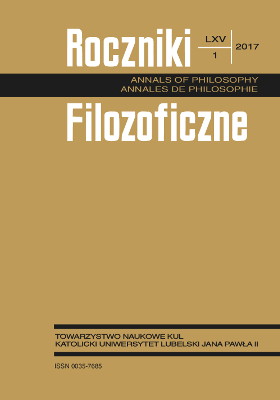Czy model Wszechświata powinien być strukturalnie stabilny?
Should the Model of the Universe Be Structurally Stable?
Author(s): Paweł Tambor, Marek SzydłowskiSubject(s): Philosophy, History of Philosophy, Philosophical Traditions, Special Branches of Philosophy, Contemporary Philosophy, Analytic Philosophy, Philosophy of Science
Published by: Towarzystwo Naukowe KUL & Katolicki Uniwersytet Lubelski Jana Pawła II
Keywords: structural stability; cosmological model; methodology and philosophy of cosmology
Summary/Abstract: We show that the modern cosmology appears to be the case of effective modeling similar to the Standard Model of particle physics (SM). In the study of the universe an important role is played by the physical theory from which the Standard Cosmological Model, allowing us to explain the properties of contemporary universe and its history, is derived. The Standard Cosmological Model includes the model of universe evolution (based on General Relativity) and SM. This paper discusses the scheme of the accelerated expansion of the universe in terms of today's dark energy and dark matter. We will examine the methodological features of such an explanation in the Standard Cosmological Model. We elaborate oscillating models of the Universe from the point of view of their structural stability. We show that this conceptual framework can be useful in describing relations between cosmological models LCDM (Lamda – Cold – Dark Matter Model) and CMD where epistemological emergence of specific properties is presented in terms of bifurcation and instability.
Journal: Roczniki Filozoficzne
- Issue Year: 65/2017
- Issue No: 1
- Page Range: 65-87
- Page Count: 23
- Language: Polish

